Customer Segmentation: Types, Steps & Benefits in 2024
Having a target audience for your product will help you create a better brand position and stronger relationship with your customers. Customer segmentation can help in identifying your target audience and building strong marketing strategies. In this article we will focus on customer segmentation, its types, the process, and some useful outcomes.
What is customer segmentation?
Customer segmentation,, is the process of dividing customers into various segments based on certain characteristics, such as demographics or buying behavior. It is an important step into building a company’s position in its target market. Customer segmentation can be confused with market segmentation, however the two are slightly different.
Market segmentation is a more general process where the entire market you are serving is divided into various segments, whereas customer segmentation is about dividing the part of the market you are serving. For instance, for market segmentation a fast-food firm would look at all the customers in the food industry, but for customer segmentation they will only concentrate on those buying fast food.
What are the types of customer segmentation?
B2B and B2C companies would need different types of methods for customer segmentation. For instance, B2C companies can divide customers according to their personal characteristics and social attributes, such as income status. For B2B companies, it can be useful to look at the location and the type of industry their customers are in to have efficient marketing strategies.
Often, different types of traits can also be combined to get good results. There are a variety of characteristics that can be used to segment customers into the following main groups, the first two of which are appropriate for both B2B and B2C companies, and the last two are most appropriate for B2C companies:
- Transactional information
- Amount spent: Especially for B2B, you can check which companies are contributing the most to your revenue and are your crucial customers.
- Number of items purchased: The volume of the products bought can also be useful for B2B to filter out their main customers.
- Timings of the purchase: Certain customers buy some products at certain times of the year, according to seasons, or even at certain times of the day. Knowing these can help you decide the optimal time to market.
- Types of products purchased: Which customers are buying which products or whether they are buying a combination of the products. This can also be joined with occupation to get a better understanding.
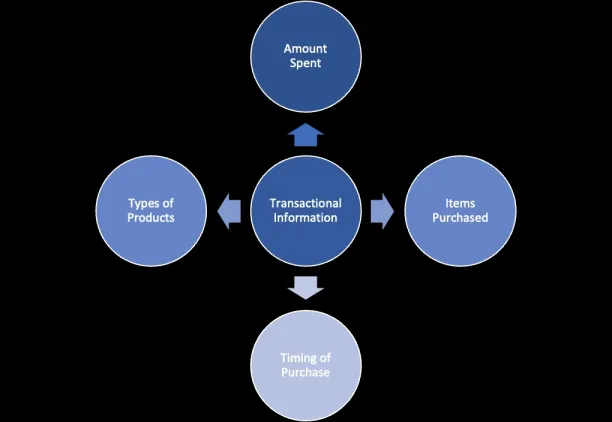
- Geographic information
Source: AIMultiple
- Location: Dividing your target market into a specific area or a country can help you cater marketing better.
- Urbanization: Check for whether your customer base is situated in rural or urban areas. The categorization will help in forming better marketing techniques.
- Climate: This refers to defining the climate and weather conditions in an area for identifying what products to sell. For instance, in a hot and humid climate it will not be profitable to sell snow boots all year round.
- Language: Not everyone can read in English or understand complicated sentences. Therefore, it is best to get familiar with the language of your customer base and market to make an impact.
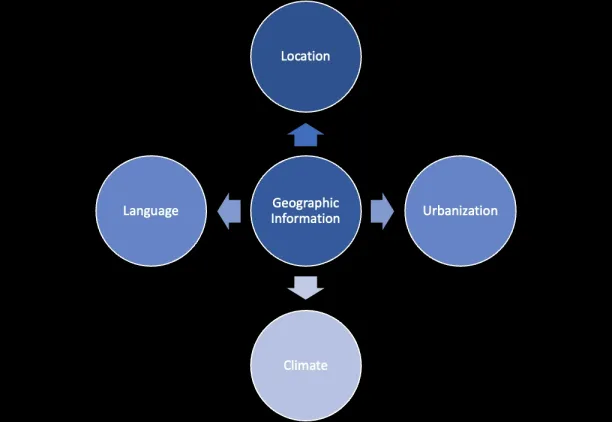
Source: AIMultiple
- Demographic information
- Age: To see if the customers are part of the youth or middle aged and above.
- Gender: certain products are gendered and can have a better reach if marketed appropriately.
- Marital status: Some products may be more popular in a culture among married people than those who are single.
- Occupation: Dividing according to occupations can be useful for some companies if the products are very specific. For instance, new cameras can have better sales if marketed for photographers addressing their needs.
- Religion: If you are marketing for Easter or Eid, you will be more successful if you segment your customers.
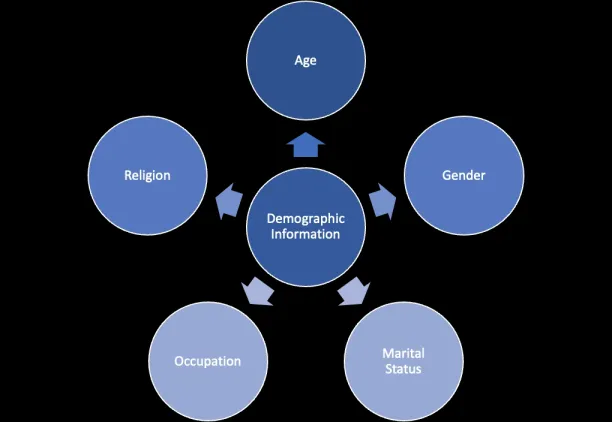
Source: AIMultiple
- Psychographic information
- Social status: This determines what social class the customer belongs to. This can help companies to market luxury products to the elite classes and cheaper alternatives to others.
- Attitudes: These are influenced by social status and cultural backgrounds of people. For instance, some cultures may have a negative attitude towards daycare services, and some may not.
- Behaviors: This is the most personal aspect of the consumers. You can get to know their likes, dislikes and personal preferences and tastes. For instance, Netflix tracks its customers’ viewing habits to suggest likewise content.
- Interests: this pertains to people’s buying habits, such as health-conscious people would buy more organic products and environmental-conscious people would buy more sustainable products.
- Lifestyle: This refers to the daily choices the consumers make, such as the type of food they eat, whether are they health conscious, their sleeping habits, etc. For instance, health-conscious people may also demand better sleeping equipment.
- Opinions: This is related to interests. For instance, if people are environmentally friendly, they would like to buy eco-friendly products.
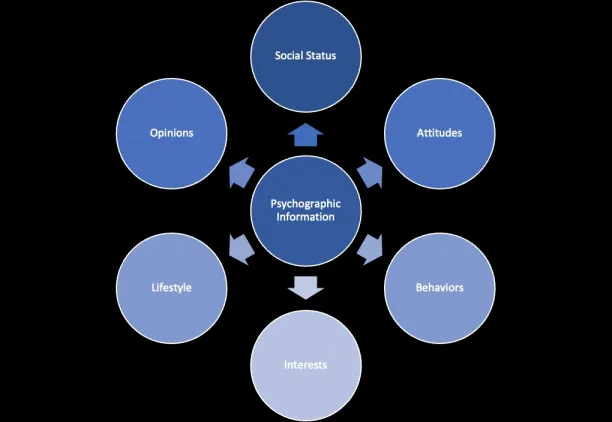
Source: AIMultiple
What are the steps of customer segmentation?
- Set up the project: This involves setting up the project along with the expectations and outcomes. For instance, you should determine the purpose of segmentation and whether it is for an upcoming marketing campaign.
- Identifying characteristics: You need to identify the types of segmentation you are aiming to perform and what characteristics are you looking for. This should also involve how many customer segments are you looking to create.
- Data collection: This step would involve collecting all the data you will be working with. This can be raw data from social media, data from reviews, feedback data or you can even use surveys.
- Results and analysis: Once you have all the data, you can run the analysis and get your results according to the previous steps. Once these results are ready, you can circulate them through your departments for feedback and if required, repeat the steps until favorable results are reached.
Benefits of customer segmentation
Customer segmentation helps in:
- Identifying the best groups of customers to sell to. This can be essential if you have just entered the market.
- Creating successful marketing campaigns. Once you know your customers better, you can market better too. This can also help you in creating an impact and gaining their trust.
- Creating a position in the customers’ minds. With customer segmentation and the right marketing tools, you can achieve the right brand position which you are aiming for in the market. Whether you want the brand to come off as accessible and friendly or luxurious and sophisticated, you can achieve it.
Further Reading:
- Customer Intelligence: What it is & Why it Matters
- In-depth Guide to Price Intelligence for Profitable Growth
If you want to know more about our services, feel free to contact us.
This article was drafted by former AIMultiple industry analyst Rijja Younus.

Cem has been the principal analyst at AIMultiple since 2017. AIMultiple informs hundreds of thousands of businesses (as per similarWeb) including 60% of Fortune 500 every month.
Cem's work has been cited by leading global publications including Business Insider, Forbes, Washington Post, global firms like Deloitte, HPE, NGOs like World Economic Forum and supranational organizations like European Commission. You can see more reputable companies and media that referenced AIMultiple.
Throughout his career, Cem served as a tech consultant, tech buyer and tech entrepreneur. He advised businesses on their enterprise software, automation, cloud, AI / ML and other technology related decisions at McKinsey & Company and Altman Solon for more than a decade. He also published a McKinsey report on digitalization.
He led technology strategy and procurement of a telco while reporting to the CEO. He has also led commercial growth of deep tech company Hypatos that reached a 7 digit annual recurring revenue and a 9 digit valuation from 0 within 2 years. Cem's work in Hypatos was covered by leading technology publications like TechCrunch and Business Insider.
Cem regularly speaks at international technology conferences. He graduated from Bogazici University as a computer engineer and holds an MBA from Columbia Business School.
To stay up-to-date on B2B tech & accelerate your enterprise:
Follow on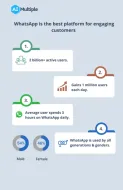

Comments
Your email address will not be published. All fields are required.